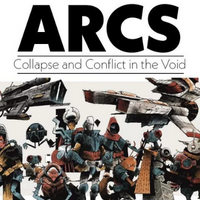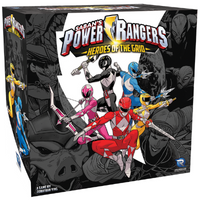11 August 2022
|
Get your ‘looking at the board’ caps on (yes, literally) for this game of cat and mouse across old London town
Words by Christopher John Eggett
This 1983 winner of the Spiel des Jahres takes you on a rollercoaster when it comes to your expectations. The name promises a detective game, the contents of the box includes a cardboard ‘visor’ (previous editions provided an actual baseball cap with Mr. X embroidered on it) which hints at prop-based nonsense, and the age on the box and the general presentation suggests it will be extremely family friendly. And it’s not really any of these things. Let’s unravel the mystery of what’s actually in this box.
WHAT IS IT?
The city of London lies before you, all of its roads connecting to nodes and points. And it is along these routes that the detectives and policemen of Scotland Yard are attempting to track Mister X – ideally to corner him before he can hop into yet another taxi, bus or tube station to make an escape.
One player takes the role of Mr. X, moving across the board in secret, whereas the other players take the roles of detectives, moving in plain site. Movement itself is key to the game, there are three main ways of travelling along the routes between nodes – taxi, bus and underground. Each will take you to the next node of the matching colour, with taxis only taking you a short distance, buses taking you two or more nodes down a line, and the underground whipping you quarter-way across the board.
The detective players have to pay their fair share to get around – with a limited number of taxi, bus and underground tokens to use throughout the game. On their turn they will spend one of these per detective to move the piece along to the next matching node. It’s extremely simple.
Mr. X however doesn’t place a piece on the board initially. Instead, they write the nodes they’re travelling to each turn in the slotted clue holder which logs his journey. Mr. X will then take the token used (from the general supply) and then place that on top of the entry, so that the detectives can’t see where he has gone, but can see how he got there.
Of course, with this set up, there’ simply no way – except for blind luck – for the detectives to catch up with Mr. X. Luckily the perpetrator has to surface every few turns, giving away their position for that moment. At these junctures the Mr. X player pops their see through pawn on the board to indicate their position, and the real game begins.
While Mr. X removes that pawn after the turn, he becomes hunted – those first few turns of secret movement might feel a little too relaxed now. The detectives can see his options from each station, and where he’s probably gone.
It’s not really a game about catching Mr. X in the sense of being somewhere fast – you’re simply not agile enough to do that as the detective players – but instead, it’s about working out which possible roads and nodes Mr. X has escaped down. Unpick that puzzle, and you’re on your way to catching the crim.

WHY SHOULD YOU PLAY IT?
Scotland Yard is about the push and pull between the detective and Mr. X – but not because they’re hunting him down, but because they’re working out exactly where he might have gone given the last few movement options. By this I mean it’s a surprisingly cerebral game for something packaged as a family or even children’s game – working out that if Mr. X went by taxi and then by bus leaves you with four options for the current location can be a thoughtful discussion in games with three or more players. Some younger players are going to struggle with the concept, and it does have the feeling of a ‘proper’ hidden movement game about it.
At two player – where one person controls two detectives and two policemen (who can move for free) – the game shines best. As a head to head it becomes very cat and mouse. If you’re the detectives, you’re attempting to close the net around the perp and as Mr. X you’re usually trying to sneak out of the net at the last minute. It’s surprisingly rare to be able to play keep away for the whole game as Mr. X – even when using the tokens that conceal your method of travel and your double-movement tokens. Instead, you’re often hoping that the cops will pass you by on their move, allowing you to double back behind them – until the next time you’re forced to pop up. It’s got more thrills to it than you’d expect, and a completely different feeling on either side of the table. You’ll also soon find that you’ll have a preference of the single secret movements, which feels like the true bluffing game, or the almost mechanically procedural though process engendered by the policeman’s game.
And while you might not think the cardboard visor now supplied in modern versions of the game is up to much – you might end up using it anyway. Seeing where Mr. X looks on the board does really ruin it, especially as the density of the nearly 200 nodes tends to mean a bit of peering around is required. The current incarnation, still by Ravensburger, is a little stuck in amber in terms of its looks and presentation. Give this design to a more modern design studio and they’d be able to update it to something truly fitting for today’s audience – even if that’s just making the components that little bit nicer.
But the last question is… is it a detective game? Not really, not in the modern sense. We’ve got an abstract hidden movement game here with a vague detective game theme placed on top. There’s none of the connecting clues and lateral thinking that a good mystery game might have in it. Then again, does anyone really complain that Ticket to Ride isn’t really about trains, or indeed, ticketing? In the end, this is a game that holds up surprisingly well with modern audiences – there’s something eternal about the mechanics that dive into just not knowing what the other player is up to. And for that, it’s worth picking up the next time you see it in a charity shop.
You can read our very first review of Scotland Yard here
Looking for more?

This review came from Tabletop Gaming Magazine, which is home to all of the latest and greatest tabletop goodness. Whether you're a board gamer, card gamer, wargamer, RPG player or all of the above, find your copy here.
Get your magazine hereRead More...

If you want to read more about one of the most hotly anticipated games of the year, check out our interview with Cole Wehrle on ARCS! A new game from the designer of Root and Oath, and we've got all you need to know.
To infinity and beyond
Join us in person

We can't wait for Tabletop Gaming Live 2022! An epic weekend in Manchester full of board games, card games, roleplaying games, wargames and more, with amazing exhibitors, great games, and an opportunity to game together in person.
See you there!Treat Yourself!

Have you visited our game store? We have everything from mystery boxes, to games and accessories – including the above Power Rangers: Heroes of the Grid, with a great discount! Head over to find your new favourite game.
Visit the Game Store
Sometimes we may include links to online retailers, from which we might receive a commission if you make a purchase. Affiliate links do not influence editorial coverage and will only be used when covering relevant products








Comments
Login or register to add a comment
No comments